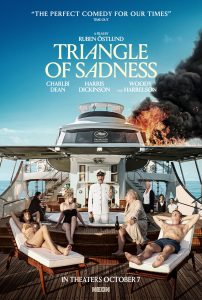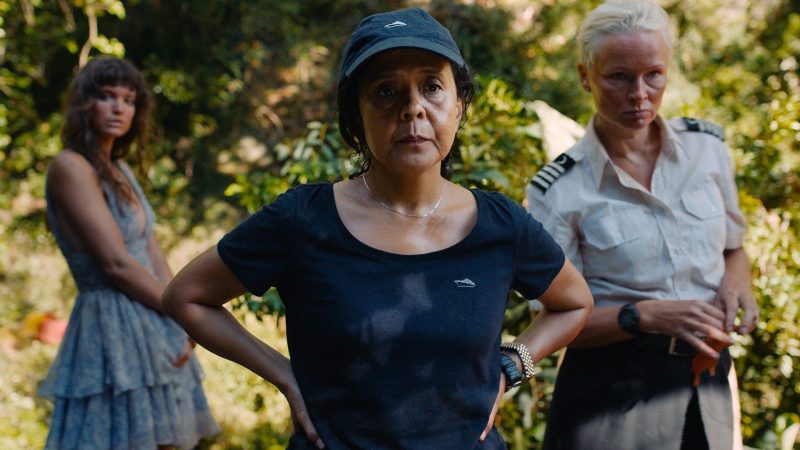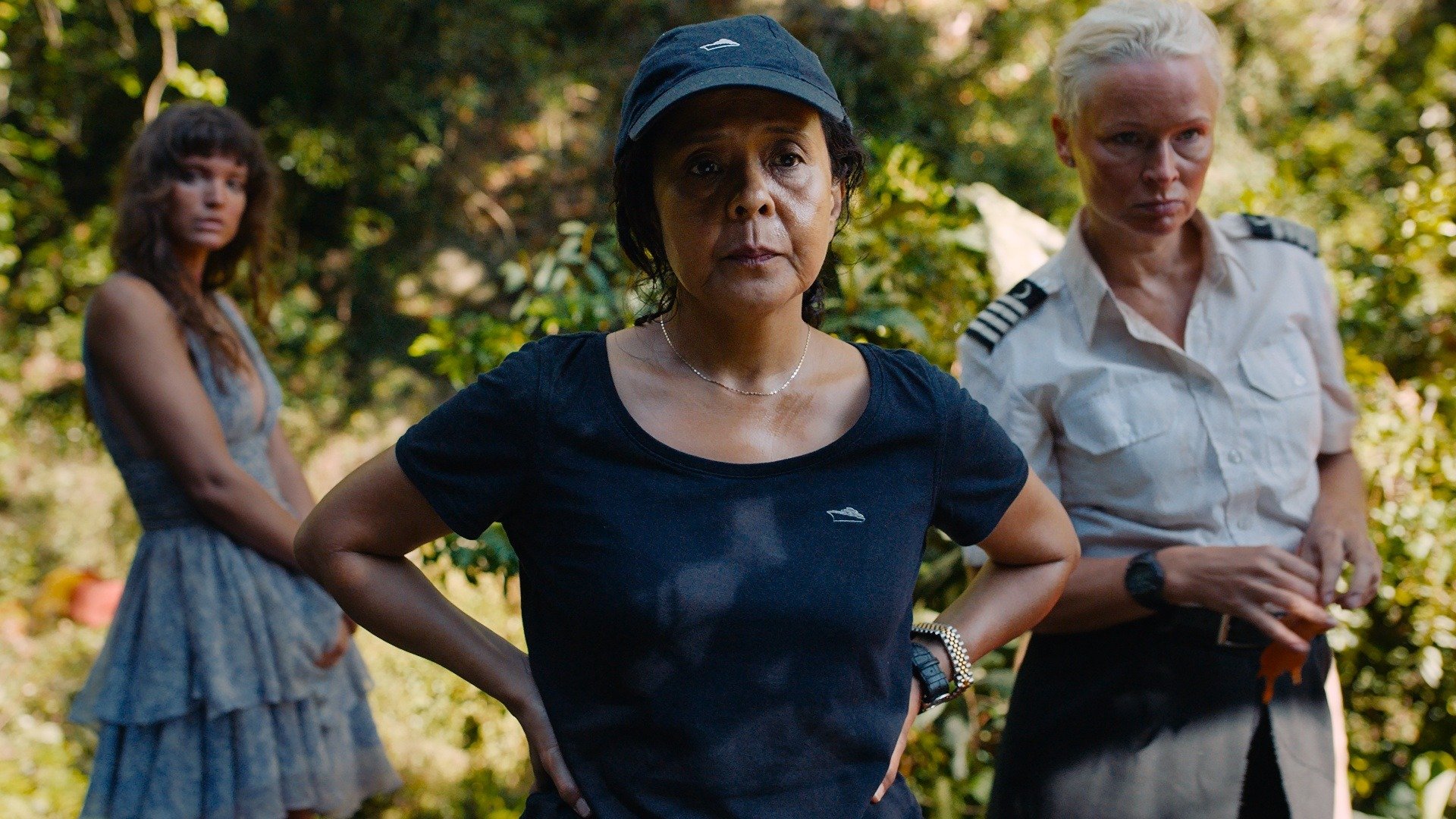
A dream yacht trip for the superrich turns into an unexpected nightmare for its passengers in Triangle of Sadness.
The good life. We all want it. Some of us even crave it to the point of going against our own better judgment. Such is the case of young Carl (Harris Dickinson) and his influencer/model girlfriend Yaya (Charlbi Dean). For his part, Carl often questions the morality of such desires, but not quite enough to eject them from his life. Yaya has no such hang-ups. Quite the contrary. This dichotomy balances their relationship on the thinnest of threads, yet they carry on, hopeful that their impending change in status will be the tonic that cures all ills.
The strength of that thread is tested to the fullest when the pair are offered the chance to join an intimate cruise designed to pamper the privileged beyond their wildest imaginations. Every request is met with a smiling, can-do attitude from the ship’s eager staff, no matter how ludicrous. This is a trip built to impress the unimpressible. The only variable beyond the staff’s control is the weather, and it has its own take on abundance.
This dark comedy comes from the offbeat mind of writer/director Ruben Östlund (Force Majeure and The Square). Östlund has a preternatural skill at making audiences uncomfortable, and this latest effort adds a new dimension to his bizarre repertoire. The characters who inhabit his films often feel randomly plucked straight from the streets of any typical town. Their authenticity pulls you into their world with the skill of a master hypnotist. Everyone feels instantly at ease, as if among lifelong friends, until Östlund pulls the curtain back to reveal the true nature of his cunning commentary. His is the kind of storytelling that I could listen to for hours.
Triangle of Sadness breaks the tale into three distinct chapters, the first of which introduces you to the combative couple. Just as their story begins to settle in, the landscape shifts forward to some short time later. The pair join other travelers among the cozy confines of the soon-to-depart craft before the final chapter lays out the journey’s aftermath. It’s in the fixing of these boundaries that the first problems with the story arise. For all of its psychoanalytic brilliance, the opening chapter bears little resemblance to the rest of the film. The middle stanza barely touches on it and devolves into a graphic, pseudo-Monty Python skit. That’s not to say that it doesn’t have its moments. I’m a huge Monty Python fan, but it all just feels entirely unaware of the tone of what came before. Like the others, the final act has its moments, but it takes on its own distinct, somewhat disjointed, perspective.
Östlund’s work will often let you find your own way with his material, but this time, he goes too far, which is to say that he doesn’t go far enough. This triangle doesn’t quite manage to meet at its points. Yes, I was challenged. Yes, I was happily uncomfortable – an expectation hammered home by the branded barf bag given out before the screening. The problem is that each chapter starts the process over from scratch. It’s like trying to enjoy a meal whose chef can’t decide which cuisine to stick to. I’m sure that’s not the discomfort that the film was after.
All that aside, I still enjoyed the experience. It’s another film of Östlund’s that I’d have gladly watched for several more hours. That’s a nod to both his writing skills, adeptness of direction and the exemplary acting chops of everyone involved. Every scene touches some part of your inner core, tapping at the wall of your natural defenses, demanding self-reflection. I just have this nagging feeling that, had the director paid just a bit more attention in geometry class, this could have garnered a perfect score.



